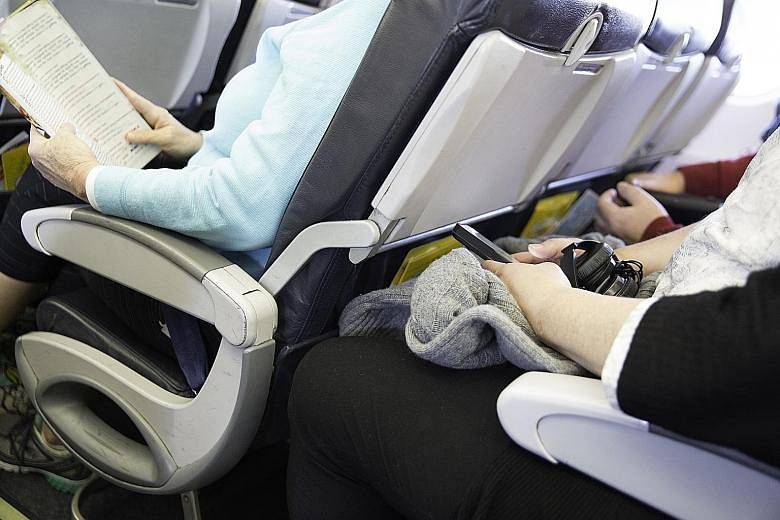Being immobile for long periods of time can put you at risk of blood clots or deep vein thrombosis (DVT). This is why flying, especially in cramped conditions, has been associated with DVT.
Indeed, the term "economy class syndrome" came about because it was thought that the lack of legroom in the cheapest seats increased the risk of blood pooling in the lower part of the legs and forming clots. The truth is, it does not matter where you sit on the plane.
"The class of travel does not matter as business class passengers have the same risk of VTE as those in economy class," said Dr Yap Eng Soo, a consultant at the haematology division of the department of haematology-oncology at the National University Cancer Institute, Singapore. He was referring to venous thromboembolism (VTE), a disease that includes both DVT and pulmonary embolism.
The main cause of VTE during flights is a combination of dehydration and immobility, he said. This could be why some studies have shown taking the window seat might make one more prone to VTE.
"Taking the window seat makes it difficult for you to get up and walk easily, but if you keep yourself well hydrated, you should be going to the toilet every two to three hours," he said. "This will 'force' you to walk around.You should also avoid alcohol and caffeine as these beverages will cause dehydration."
Wearing compression stockings on long flights has been thought to lower the risk of VTE, but Dr Yap said there are no definitive studies that show they can prevent VTE. Furthermore, most compression socks bought over the counter may not fit correctly and are uncomfortable, he said.
-
30
Number of air travellers per million worldwide who develop venous thromboembolism (VTE).
-
100
Number of hospital inpatients - who are prone to long periods of immobility - per 100,000 worldwide who are diagnosed with VTE.
To reduce one's risk, stay hydrated and move at least once every three to four hours, said Dr Yap.
"If you cannot walk around... then doing the exercises described in some airline magazines can be useful." These exercises, done while seated, maintain blood circulation.
Joyce Teo


